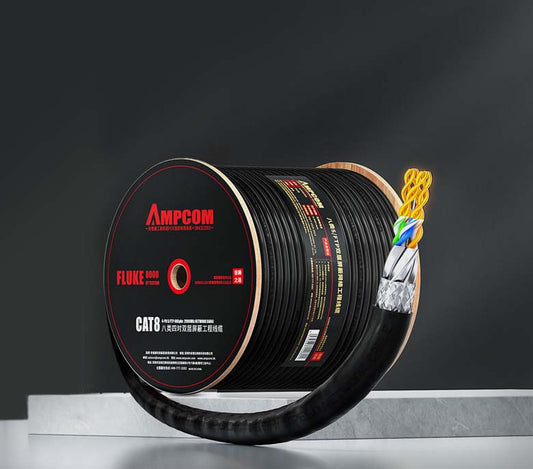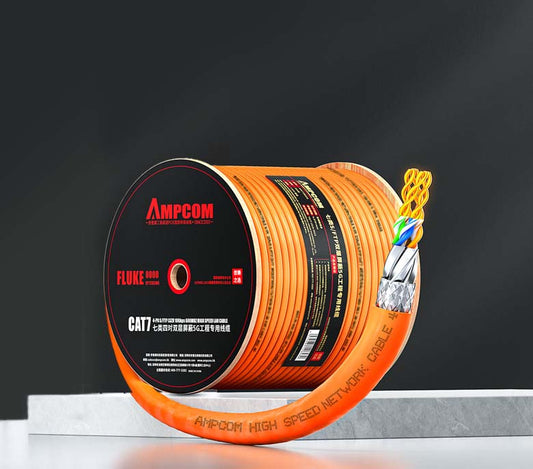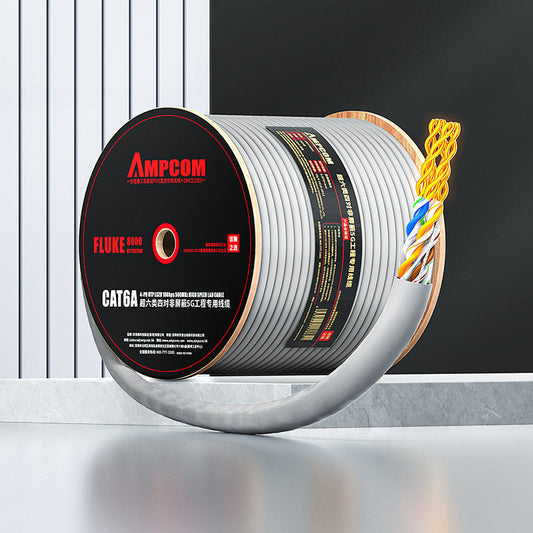Keystone Jacks vs Field-Termination Plugs vs Pre-Term Harnesses
Understanding the key differences between Keystone Jacks, Field-Termination Plugs, and Pre-Terminated Harnesses is essential for network professionals to make the right decisions for their network setup. This guide provides detailed insights into the pros and cons of each solution.
Last updated:
Introduction
When setting up a network, selecting the appropriate components for network cabling is crucial. Three common options for making network connections are keystone jacks, field-termination plugs, and pre-terminated harnesses. Each of these options plays a distinct role in networking, offering different benefits depending on the network environment, installation needs, and budget considerations.
Keystone Jacks: Flexibility in Network Design
Keystone jacks are one of the most commonly used components in structured cabling. They are designed for use with keystone wall plates and can be easily snapped into place, making them a versatile choice for various network installations.
Advantages of Keystone Jacks
- Modular and Flexible: Keystone jacks offer a high level of modularity. They allow for easy customization of patch panels and wall plates. With the ability to mix and match various jacks (e.g., for Ethernet, voice, or coaxial cables), keystone jacks make it easy to adapt to changing network needs.
- Durability and Reliability: Typically designed to handle high-speed data transmission, keystone jacks are built to withstand wear and tear. They are highly durable and reliable, making them suitable for environments where the network is expected to endure regular changes or maintenance.
-
Easy Maintenance and Upgrades: In the event of a failure or need for an upgrade, keystone jacks are relatively easy to replace. The modular design ensures that only the affected component needs to be replaced, minimizing downtime and cost.

Best Use Cases for Keystone Jacks
- Data centers where frequent reconfigurations and upgrades are common.
- Offices that need a flexible, scalable solution for Ethernet or voice connections.
- Home networks where customization and easy future upgrades are desired.
Field-Termination Plugs: Quick and Simple Installation
Field-termination plugs are a convenient option for network installations where flexibility and speed are essential. These connectors are pre-fabricated with bare wires that allow for quick field installation.
Advantages of Field-Termination Plugs
- Cost-Effective for Small Installations: Field-termination plugs are an affordable option, especially when working with a small number of connections or in environments where the network is installed by non-professional technicians.
- Quick Installation: These plugs simplify the termination process by allowing installers to directly connect the network cable to the connector, without the need for tools like crimpers or punch-down tools.
- Low-Cost, Flexible Option for Temporary Setups: Field-termination plugs are often used in temporary setups or for quick fixes where the network’s full performance isn’t a critical factor.
Best Use Cases for Field-Termination Plugs
- Temporary networks or setups in spaces where the network might not be permanent.
- Small businesses or home offices where the cost is a significant consideration and high-performance cables are not as critical.
- Low-traffic areas where the network’s performance is not under heavy demand.
Pre-Terminated Harnesses: A Complete Solution for High-Volume Installations
Pre-terminated harnesses come fully assembled and ready to be connected to the network infrastructure. These harnesses are often used in high-density environments where network cables need to be preconfigured and then easily deployed.
Advantages of Pre-Terminated Harnesses
- Streamlined Installation: Pre-terminated cables provide a ready-to-go solution, saving significant installation time. This is particularly useful in large-scale projects, like data centers or enterprise networks, where time is a critical factor.
- High Performance: Pre-terminated harnesses are typically tested for performance standards, which ensures that they meet industry standards before they are deployed. This reduces the risk of performance degradation during installation.
- Uniformity and Quality Control: With pre-terminated solutions, each cable is carefully fabricated and tested in a controlled environment, ensuring that there is little variation in quality, which is especially important for networks with high-performance requirements.
-
Reduced Labor Costs: Because they come pre-terminated, labor costs associated with manually terminating cables in the field are significantly reduced.

Best Use Cases for Pre-Terminated Harnesses
- Data centers that require large-scale installations where time and performance are critical.
- Enterprise networks where consistency and quality are a priority, and installations must meet strict compliance standards.
- High-density environments such as server rooms, where large volumes of cables need to be connected quickly.
Key Differences: Keystone Jacks vs Field-Termination Plugs vs Pre-Terminated Harnesses
While all three options serve the same basic function—to connect network cables and devices—each has unique benefits that make them more suitable for different use cases. Here’s a comparison to help guide your decision:
| Feature | Keystone Jacks | Field-Termination Plugs | Pre-Terminated Harnesses |
|---|---|---|---|
| Installation Complexity | Moderate (requires punch-down tools) | Easy (no tools required) | Easy (plug-and-play) |
| Cost | Moderate | Low | High |
| Flexibility | High (modular design) | Low (fixed plugs) | Low (pre-configured) |
| Performance | High (designed for performance) | Moderate | High (tested for standards) |
| Best for | Customizable networks and upgrades | Small, quick installations | High-density, large-scale setups |
| Maintenance & Upgrades | Easy to replace individual jacks | Requires re-termination | Replacements may require re-ordering |
| Ideal Environments | Offices, data centers | Small businesses, temporary setups | Data centers, enterprise networks |
Conclusion: Which Option Is Right for You?
The decision between keystone jacks, field-termination plugs, and pre-terminated harnesses largely depends on the scale, complexity, and performance requirements of your network. Here’s a quick guide to help with your selection:
- Choose keystone jacks for flexibility and scalability in customizable networks and office environments that may require future upgrades.
- Opt for field-termination plugs if you need cost-effective, quick installations for small-scale projects or temporary setups.
- Go for pre-terminated harnesses in high-density environments like data centers where quick deployment and high performance are critical.
FAQs
What is the main difference between keystone jacks and field-termination plugs?
Keystone jacks are modular and designed for flexible network setups, making them ideal for environments that require scalability. Field-termination plugs are simpler, quick-install options that are cost-effective for small-scale or temporary installations.
When should I use pre-terminated harnesses?
Pre-terminated harnesses are best for large-scale, high-density environments like data centers where quick installation and high performance are crucial. They save significant installation time and ensure uniform quality.
Are pre-terminated harnesses more expensive?
Yes, pre-terminated harnesses are more expensive than other options because they come pre-assembled and are tested for performance before deployment. However, the time saved during installation and the guaranteed quality often justify the higher cost.



